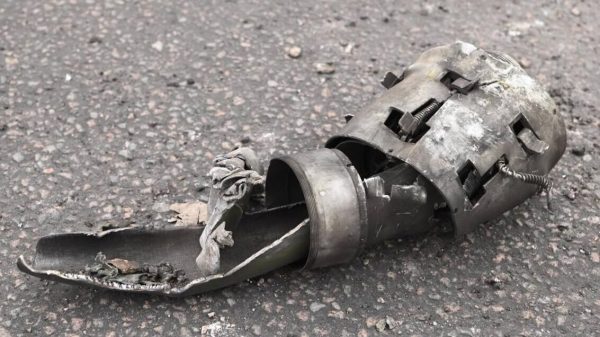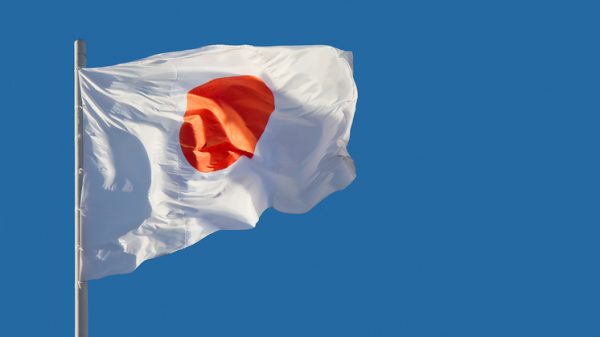At least 7,600 migrants have reached the Canary Islands from Africa by sea so far this year
Credit: Elvira Urquijo A/EPA-EFE/Shutterstock
Cheikh Tidiane Sy remembers the intense chill of the ocean spray as he sat without a life jacket on a tightly packed boat buckling against the Atlantic waves.
The 23-year-old was two days into a treacherous 1,600km migration journey from Gambia to Spain’s Canary Islands when the vessel he was in swerved to evade a Senegalese patrol boat. Then it was intercepted by the Mauritanian coastguard.
“They told us if the ship didn’t stop they were going to fire,” he said. Once they pulled into shore “they asked us to get out and sit down. They were shouting at us.”
Mr Sy was sent home by the authorities in the end with little more than a bad cold. He was one of the lucky ones.
Since the start of year, an estimated 500 people have died or been reported missing along the West African sea route, up from 86 over the same period last year.
Many have been driven to risk their lives on this extraordinary route after land borders to Europe have closed due to Covid-19. Pandemic poverty and a growing Islamist insurgency in the Sahel, meanwhile, are displacing unknown numbers of people.
So far this year, at least 7,600 migrants have made it to the Canary Islands, up 680 per cent on last year. More than 1,000 migrants reached the archipelago in a single weekend earlier this month.
Migration map / Canary Islands
Mr Sy told The Telegraph he had graduated from college and served in the cadets, but a lack of work spurred him to pay a people smuggler £370 to board the rickety fishing boat. As the only boy of six, the responsibility to provide for his family weighed heavily.
He knew that of the three Gambian boats that had embarked for the islands a few days before he left, two had arrived and one had sank. It did little to deter him. Friends had gone this way and reached their destination. “I saw how many of my friends and neighbours who had left for Europe had become rich and were supporting their families," he said.
A senior UN official said that the conflict in the Sahel and restrictions to stem Covid-19 were uprooting people throughout West Africa.
Already racked by conflict, Mali’s economic growth forecast for this year has been cut from five per cent to just under one per cent. Last month, Gambian president Adama Barrow cut the economic growth forecast from six to two per cent as a result of the pandemic.
“We’ve seen people departing in high seas and storms,” said Maria Vega, spokesperson for the UN’s refugee agency in Spain. “A lot of the time these smugglers just cheat them, take their money, put them on the boat and send them without any guidance or navigating instruments to reach the islands.”
Border restrictions due to the pandemic have reshaped migrant routes, with Mauritania, Morocco and Algeria now harder to reach. In the months after the restrictions came into force, the International Organization for Migration (IOM) recorded a significant drop in migrant flows through Timbuktu in Mali and Arlit in Niger — gateways through the Sahara.
“Human traffickers have started to offer a new route to circumvent the closure of some land border crossings. We’ve seen them give lower prices for these trips, even if the waters are dangerous,“ said Ms Vega.
The restrictions have turned West Sahara into the busiest departure point, with some two-thirds of arrivals in the Canary islands embarking from the Morocco-claimed desert territory.
Fuelling the number has been an influx of West African migrants forcibly deported to the territory by Moroccan authorities, stigmatised as potential Covid-19 carriers.
“It’s a new phenomenon,” said Vincent Cochetel, UNHCR’s special envoy for the Central Mediterranean. “Three or four months ago, nobody left from Western Sahara.”
Malians account for 37 per cent of arrivals to the Canary Islands this year, while a fifth are from Ivory Coast. Thirteen per cent are from Guinea, and 12 per cent are Senegalese. Authorities have also recorded nationals from Ethiopia and from the distant Comoros, an Indian Ocean island nation off Madagascar.
“You have a mix of people fleeing the wars in the Sahel. You also have people who are moving just for economic reasons,” said Mr Cochetel.
“The effect of Covid-19 means that many have lost their livelihoods and their shelter, so we’re seeing more people desperate to move to try and get a better future," he added.
“Unfortunately, I’m afraid we’re going to see more accidents on that route.” The Gambia, a country of two million, has had one of the highest rates of irregular migration to Europe in recent years. More than 35,000 Gambians reached European countries by irregular means between 2014 and 2018.
Still reeling from decades of dictatorship and the looting of state coffers, overseas remittances account for 20 per cent of poverty-stricken country’s GDP.
Idriss Mane, a 27-year-old Gambian, said that “poverty and stress” led him to board a boat bound for the Canary Islands one night last November.
As the boat passed Senegal its engine began to fail. “We were really worried,” he said, but still they carried on. By day five they were off the coast of Nouakchott, the capital of Mauritania.
“People were starving on the boat and had just some biscuits. We only ate rice once during the journey.”
The boat was intercepted by the Mauritanian coast guard and brought back to shore. Mane would later learn that a vessel ahead had capsized, killing 16.
He now sells marijuana to make ends meet, and says that because of his experience he would never try to go again.
“Many of the travellers have gone crazy because of what they saw in the deep sea. If you are not strong you will go mad,” he said.





















































Свежие комментарии